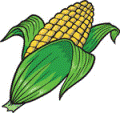Agricultural Research Division of IANR

Haskell Agricultural Laboratory (Northeast Research and Extension Center)
Date of this Version
10-1999
Citation
HELLMICH ET AL. (1999). OVIPOSITION BY O. nubilalis IN BT-CORN, JOURNAL OF ECONOMIC ENTOMOLOGY, Vol. 92, no. 5, pp 1024-1020.
Abstract
Oviposition preference by European corn borers, Ostrinia nubilalis (Hübner), for or against transgenic corn would influence amounts of refuge required for resistance management. The objective of this research was to determine if various Bacillus thuringiensis (Bt) corn transgenic events influence O. nubilalis oviposition. All commercially available events (currently 5) were evaluated, plus 1 experimental event. Results from 3 independent studies are reported, including 3 field-cage experiments with vegetative corn, 2 field-cage experiments with reproductive corn, and 2 field experiments with natural O. nubilalis on reproductive corn. In each case, Bt corn hybrids are compared with their near isogenic hybrids by counting numbers of egg masses on each plant type. More extensive comparisons were made in 3 of the experiments by determining the number, size, and location of egg masses on the corn hybrids. Moths laid more egg masses on Bt corn than on non-Bt corn in 1 cage experiment. These results, however, were not found in any of the other experiments. There is evidence that suggests cage effects influence moth oviposition more than Bt protein. Four of the 5 cage experiments and 2 field experiments indicate that the tested Bt events do not influence O. nubilalis oviposition. Larval injury to isogenic corn during the vegetative stage did not influence adult oviposition during the corn reproductive stage when compared with Bt corn and noninjured isogenic corn. Based on these experiments, suggestions are made for future studies that use natural O. nubilalis rather than O. nubilalis in cages.


Comments
US gov't work